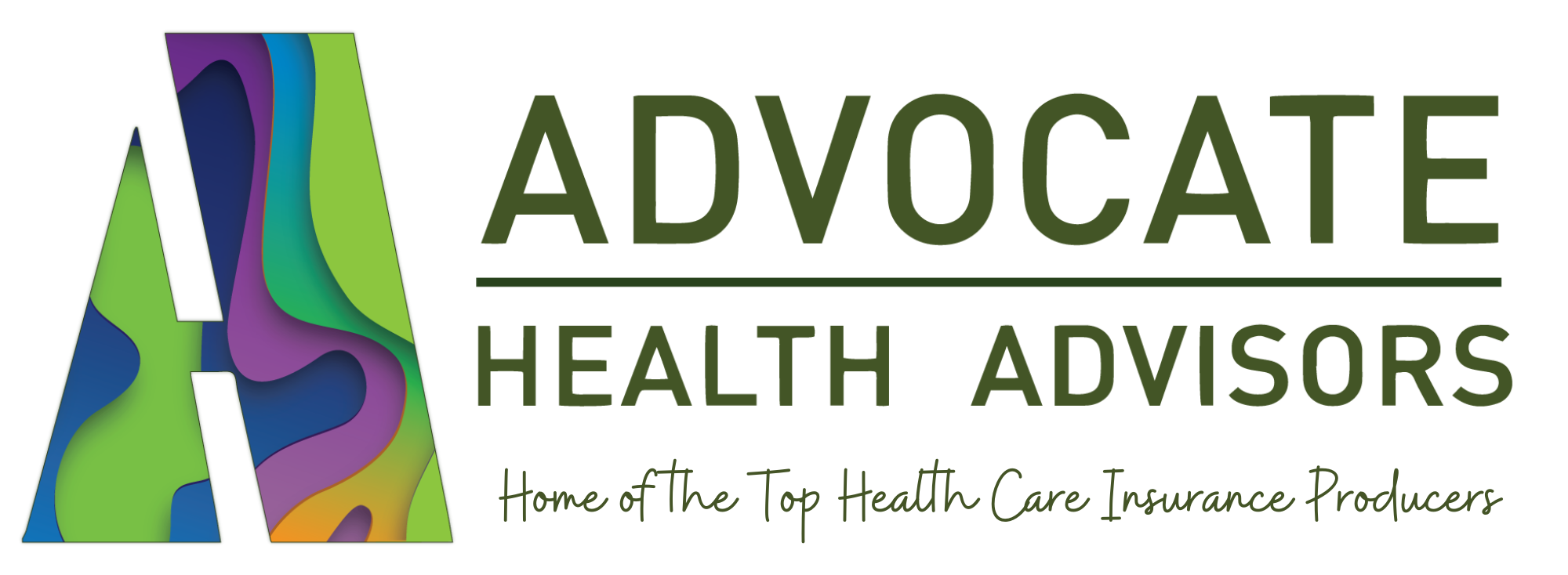NOTE: This blog post was taken from Need to Know: How to Arm Yourself and Survive on the Healthcare Battlefield (2018) by Darwin Hale, COL (RET), USAR, the Founder & CEO of Advocate Health Advisors. Darwin is a respected entrepreneur, author and decorated military officer with more than 30 years’ experience in the corporate world to include serving in the United States Army and Army Reserve (USAR).
America’s health care system is a fragmented, complicated structure. Even the professionals whose job it is to provide health care services must struggle to navigate the constant changes, loopholes, and the staggering number of inefficiencies. You would need a library to completely understand and navigate this system. However, from the point of view of most people, understanding the healthcare industry comes down to understanding health insurance.
Unfortunately, most people do not devote a lot of effort to understanding this important subject. For many working-age Americans, this is due in part to the fact that they do not purchase health insurance themselves. It is done for them through their employer. Retired Americans are commonly covered by Medicare and some form of private plan supplement. Those retirees pay the premiums for Medigap or Advantage Plans, so you would expect that they would be more knowledgeable. Some are, but this is not universally true.
In fact, a survey conducted by the Medicare Administration revealed that most seniors could not name or describe the four parts of the Medicare system. This is very basic information that every senior should have, especially when signing up as a new beneficiary or during the annual open enrollment period. This knowledge is essential to choosing the best possible option to fit a senior’s budget and their health care needs. The choice made during the open enrollment period or when first eligible will determine what benefits are available, who you get them from, and your out-of-pocket costs.
In today’s market, seniors have three basic options for getting Medicare coverage. They are Original Medicare, Original Medicare plus a Medigap policy and Advantage Plans. Let’s look briefly at these possible choices.
Option 1: Original Medicare
“Original Medicare” (or traditional Medicare) is a term applied to the two parts of the Medicare system that were created in 1965 with passage of the Medicare Act. Before that time, most seniors had found it all but impossible to buy health insurance. Original Medicare consists of two parts. Hospital expenses are covered by Medicare Part A, while outpatient services are included in Part B. There is an important difference between Parts A and B. Part A is an entitlement; for most people, there is no premium for Part A coverage. A senior who has met the work requirements- at least 10 years (or 40 quarters) and paid Medicare taxes during that time is entitled to Part A coverage at no cost.
This is an incredibly valuable benefit! If it were not for Medicare Part A, most seniors could not buy hospitalization insurance at any price, even if they could afford the premiums. Age and preexisting conditions would shut them out of the health insurance market. This free Part A coverage is the best deal in the health care market today. To put a price on it, during 2021 seniors who have not fully met the work requirements will pay up to $471 each month to buy into Part A. That’s up to $5,652 per year. Part A is easily the best bargain in the market.
Nearly all seniors know that there is a premium for Medicare Part B. This premium can vary for some people, based on the most recent income tax information the Medicare Administration has for them. However, most seniors pay the standard Medicare monthly premium ($148.50 per month in 2021), usually deducted from their Social Security benefits. This is not as great a bargain as Part A but considering the age and medical history of most Medicare patients, it is still a very good deal.
One of the biggest misconceptions younger people have is that when they get their Medicare, it pays for everything. That is just not the case! Original Medicare alone leaves you exposed to considerable “gaps” in coverage, cost sharing schemes, co-payments, and multiple benefit-period deductibles. There may be no yearly limit for what you could pay out-of-pocket, no safety net. Medical expenses are among the most commonly cited causes of bankruptcy.
Option 2: Medigap (Medicare Supplement plans)
Many people find that Original Medicare alone is insufficient, and they choose a Medicare Supplement plan, also known as a Medigap policy to fill the gaps in Medicare coverage. These supplemental policies were designed for the episodic-care model, and they are good if you can afford them. They are easy to use, and you probably won’t need to go very deeply into your pocket with these policies.
With a Medigap policy, Medicare will pay its share of the Medicare-approved amount for covered health care costs, then your Medigap policy fills in the “gaps” and pays its share. That Medigap share may range from 100% of the copay and deductible for expensive policies to much lower coverage for less costly plans. Medigap users pay a monthly premium to a private insurance company as well as the monthly premium for Medicare Part B.
Medigap policies are available from any insurance company that’s licensed in your state to sell one. They are guaranteed to be renewable, even if you develop new health problems. However, Medigap policies do not include prescription drug coverage. For that, you must join a Medicare Prescription Drug Plan (Part D).
Medigap plans come in several standardized forms, Plans A, B, C, D, F, G, K, L, M, and N. This is a little confusing! What about Plans H, I and J? They are not available because of changes to Medicare itself. Medigap plans are strictly standardized; a Medigap Plan N sold in Miami has the same benefits and coverage as a Plan N sold in Denver or Houston. These policies vary widely in price depending on the coverage offered, and there can be differences in premiums that insurance companies charge for the same coverage. That is a good reason to educate yourself about the health care insurance industry.
You can see that the Medigap option can be complicated. It will involve paying three premiums- the automatic Social Security benefit deduction, the Part B premium and the Part D premium. Another big concern is that they do not offer a coordinated care model, and this is where a lot of medical errors and excessive costs originate. If you have several doctors who do not talk to each other, they may duplicate services or not provide needed preventative care.
Option 3: Part C (Medicare Advantage)
There is another way, often a much better way, to fill in Original Medicare’s gaps. It is called “Medicare Part C” or a “Medicare Advantage Plan.” This terminology can cause confusion, because “Part C” is not a part at all, it is an entire package, complete onto itself. It will include Parts A, B and D as well as some extras. You might also hear terms like “Medicare Health Plan” or just “Part C Plan.” All of these refer to the same thing, a way to get Medicare Parts A, B, and D plus the possibility of extras like gym memberships or yoga instruction. The term, “Medicare Advantage Plan” is the most common name used, especially in marketing and advertising. Each year during the Medicare open enrollment period, television, radio, newspapers and your mailbox will be full of advertisements for these plans.
Medicare Advantage Plans are the epitome of a coordinated care model, where the different parties work together to take care of you as an individual and not just as their client. That is a big reason why Medicare Part C is exploding in popularity. According to the Kaiser Family Foundation, total Medicare Advantage enrollment in 2021 was 26 million members or 42% of all Medicare patients. This rate of participation has more than doubled in the past decade and is expected to rise to about 51% by 2030.
Advantage Plan market shares vary widely from state to state and even within counties in the same state. In general, Advantage Plans are most popular in areas where there are large concentrations of doctors and high population densities. Florida, Minnesota, Alabama and Michigan all had 2021 Advantage Plan participation rates very near or over 50%. More rural states had lower rates of acceptance, and this is what you would expect. It is simply too difficult to organize a network in thinly populated areas. Alaska had the lowest percentage of Part C members, 1%.
Advantage Plans are insurance products run by private insurance companies, complying with exact Medicare standards. Any senior who is qualified for Medicare insurance is also qualified for an Advantage Plan. A senior who enrolls in one of these plans is still participating in Medicare and paying monthly Part B premiums, but they are not in Original Medicare. With Part C, the government pays the insurance carrier a fixed amount of money per member each month regardless of the services used. The plan member pays an additional premium ranging from $0 (that’s right, nothing per month) to a higher amount. This premium varies depending on the additional benefits provided. Choosing an Advantage Plan often means that seniors can access other services like dental insurance, gym memberships, or packages like the SilverSneakers® program.
SilverSneakers® is a basic fitness service not covered by Original Medicare but included in many Advantage programs. It is a program that encourages seniors to involve themselves in physical activities, helping them to take greater control of their health. Advantage Plans combine the stability, dependability, backing, and oversight of the federal government with the choice, innovation, and the high level of efficiency and customer satisfaction of private companies. It’s the best of both worlds. With these plans, all health care providers are motivated to keep you as healthy as possible.
These private companies make more money if you stay healthy, and they can put that money into extra benefits. Private companies want you to go to the doctor, to get a wellness visit, to go to the gym, and to adopt good nutritional habits. Often, these companies have programs designed to help you quit smoking and lose weight. Their motivations are both philanthropic and self-serving; smoking and obesity are two of the costliest factors driving health care expenses, while good health habits save them money.
Advantage Plans seek to align the interests of health care insurers, patients and government. They do this by simplifying and coordinating health care and investing the savings back into added benefits. Everybody wins, so by all means investigate Advantage plans and the care they provide.
Sources
https://www.medicare.gov/your-medicare-costs/medicare-costs-at-a-glance
https://scholar.harvard.edu/files/pgoldsmithpinkham/files/dgy_bankruptcy.pdf





